We have a new Bird Bath.
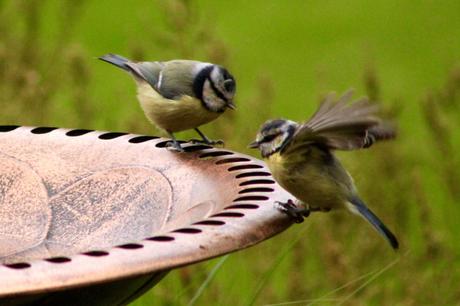
Juvenile Blue Tits discovering the new bird bath
10 years ago, our youngest daughter rescued a feral Kitten with a badly gashed stomach. A vets fee and some pleading eyes were involved and we became the owners of a second cat, along with several guinea pigs, hamsters, one eyed rabbits, one eared rabbits, an assortment of chickens and our beloved Bag Puss of cat, Charlie. Our doodle less Labradoodle, Archie came into our lives 2 years later.
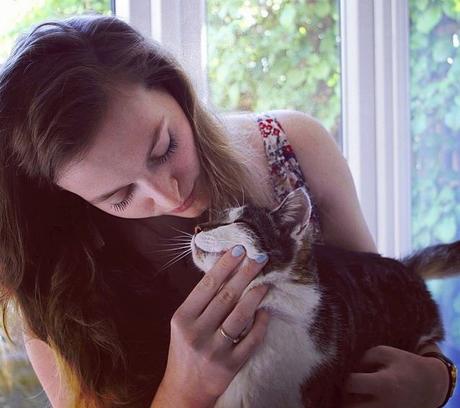
LollyPop, Lolly for short, took some taming, being a previously feral cat, he had been used to catching his own dinner – mainly flies and rodents and I am sure some birds too. Lolly drank from the bird bath, than having deterred any thirsty feathered friends, he sat on top of the bird table, basking in the sun, surveying his kingdom below.
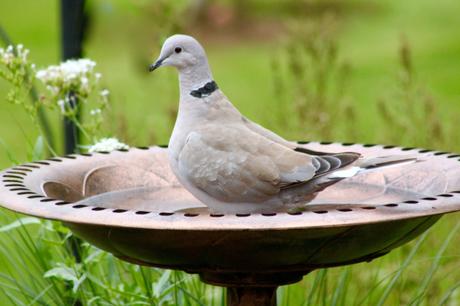
Collared Dove – they came to the UK in the 1950’s
We gave our stone bird bath away, followed shortly after by the bird table and replaced it with a multi armed pole for hanging nuts and seeds from. But we really missed watching birds drink and splash around whilst bathing in the bird bath. We were ever mindful of Lolly during the day but he was not an indoor cat, if we tried to contain him at night, he made sure sleep wasn’t an option for any of us. Having himself slept all day, he only wanted a night on the tiles.
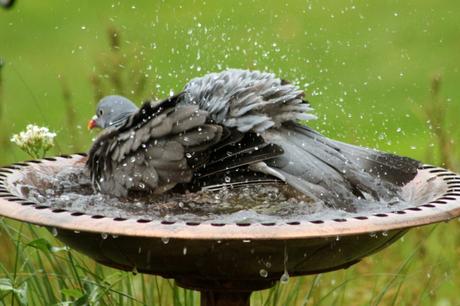
Wood Pigeon having a thoroughly good wash
A neighbor once reported that she saw Lolly fillet a pigeon and eat the lot. In the UK we have 5,400,000 breeding pairs of Wood Pigeon. They eat seeds, nuts and berries, cabbages, sprouts, shoots and buds wether asked to or not. They cause irritating damage in my veg garden, but they do clean up fallen bird seeds, which the smaller birds chuck out of the feeders.
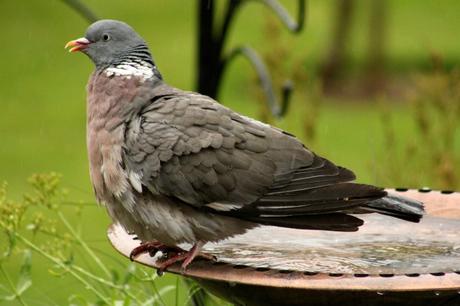
Wood Pigeon drying off
A report by The Mammal Society who carried out a study on predation from domestic and feral cats has been widely reported in our press and mainly against cats. However, for this post, I have read it again and was surprised to read that cat owners reported less predation if they owned a bird feeder.
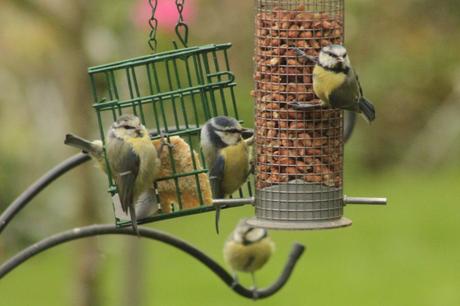
Family of Blue Tits on feeders
From the RSPB website, who offer a balanced view – “The most recent figures are from the Mammal Society, which estimates that the UK’s cats catch up to 275 million prey items a year, of which 55 million are birds. This is the number of prey items that were known to have been caught; we don’t know how many more the cats caught, but didn’t bring home, or how many escaped but subsequently died.”
On balance the RSPB say –
“Despite the large numbers of birds killed, there is no scientific evidence that predation by cats in gardens is having any impact on bird populations UK-wide. This may be surprising, but many millions of birds die naturally every year, mainly through starvation, disease, or other forms of predation. There is evidence that cats tend to take weak or sickly birds.”
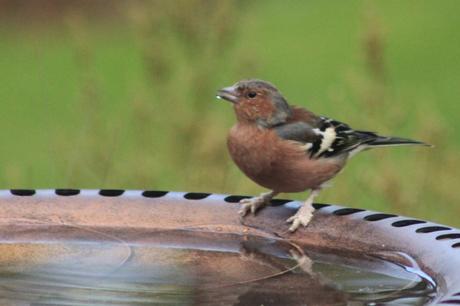
Chaffinch with chaffinch viral papilloma on foot, although not life threatening
The RSPB add “Gardens may provide a breeding habitat for at least 20% of the UK populations of house sparrows, starlings, greenfinches, blackbirds and song thrushes four of which are declining across the UK. For this reason it would be prudent to try to reduce cat predation, as, although it is not causing the declines, some of these species are already under pressure.”
“Cat predation can be a problem where housing is next to scarce habitats such as heathland, and could potentially be most damaging to species with a restricted range (such as cirl buntings) or species dependent on a fragmented habitat (such as Dartford warblers on heathland).”
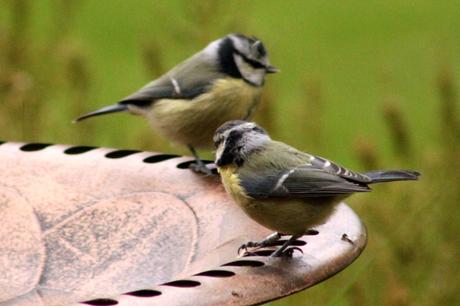
Succsesful landing by Juvenile Blue Tits
Its recommended by some wildlife organisations for cats to wear a bell on their collars to give prey a fair chance of escape. But I have to confess we did not do that, Lolly didn’t wear a collar at all, as I had a fear the collar would catch on a branch and he would end up strangled.
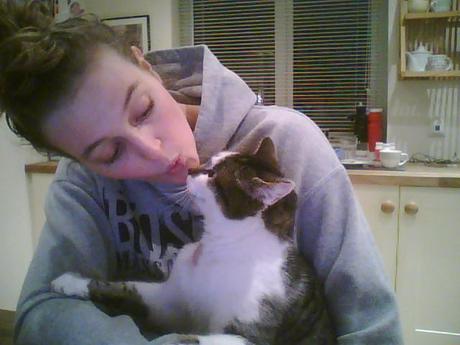
Collarless Cat
Then this Spring Lolly died and we were all very sad, especially my youngest daughter who had rescued him all those years ago. I bought a new bird bath from the RSPB, made of resin and very cleanable but a bit too deep, they recommend 2 inches of water otherwise small birds may drown, so we put some large stones in the bottom. If any birds poop in the water and thats mainly pigeons, the bath is easy to clean out.
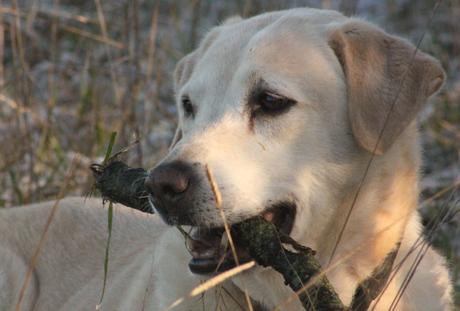
Archie, who prefers sticks to wildlife
Now we do not have a menagerie of pets any more, just Archie, who is is easy going but does attempt to chase the odd squirrel. We encourage as much wildlife to our garden as we possibly can and I do not think we will have another cat but for the time we had Lolly here, he was much loved and he is missed.
